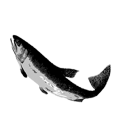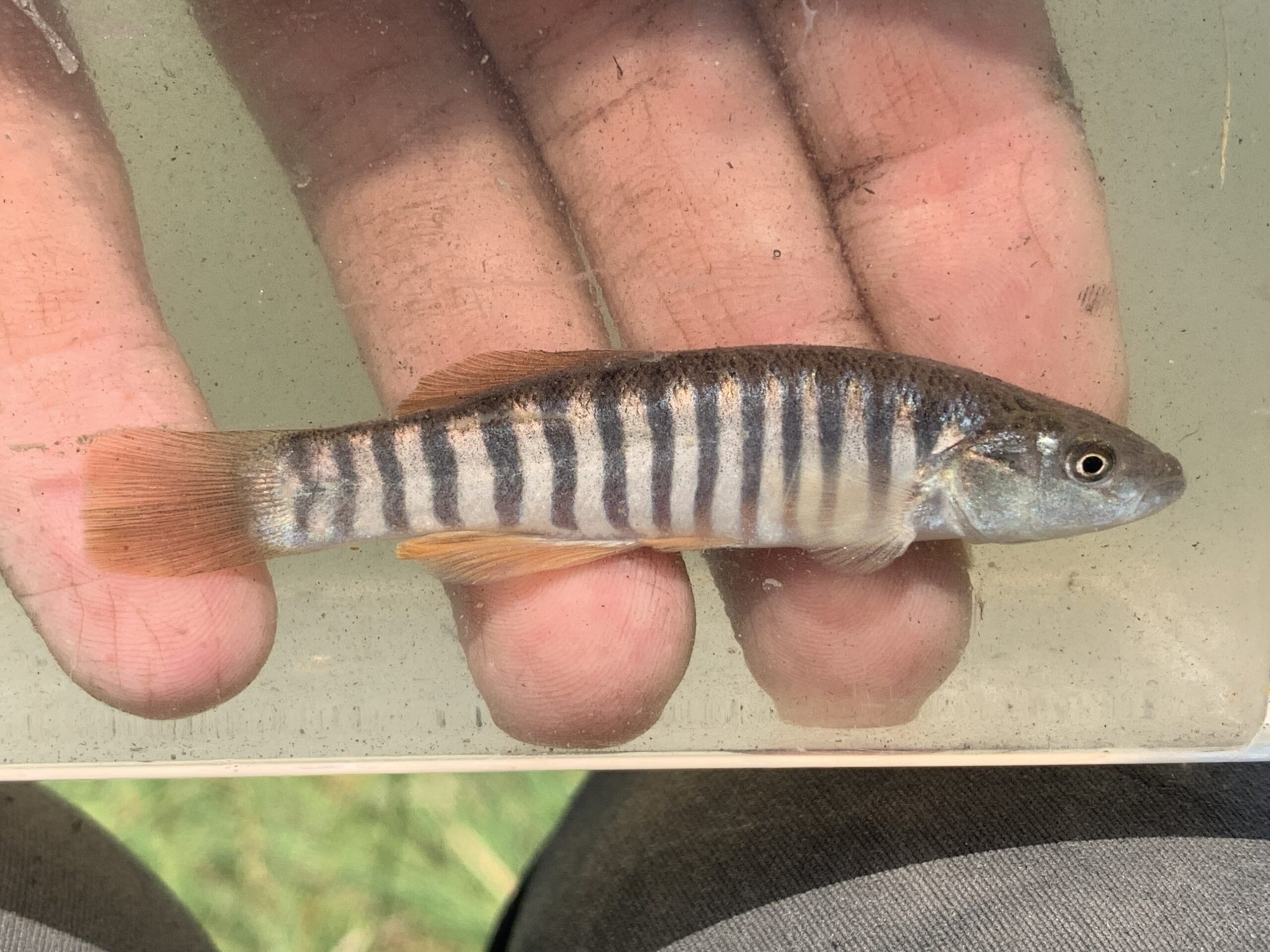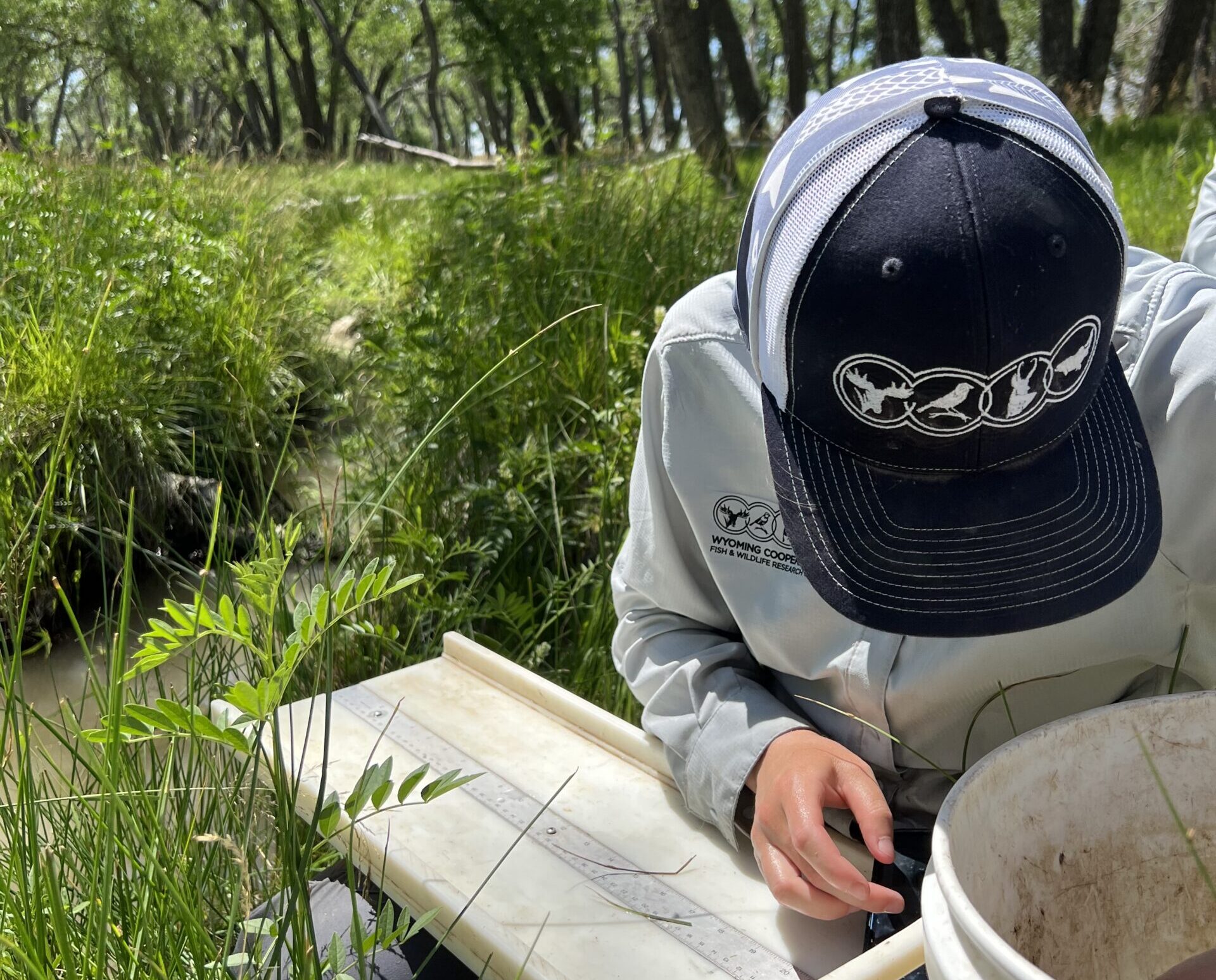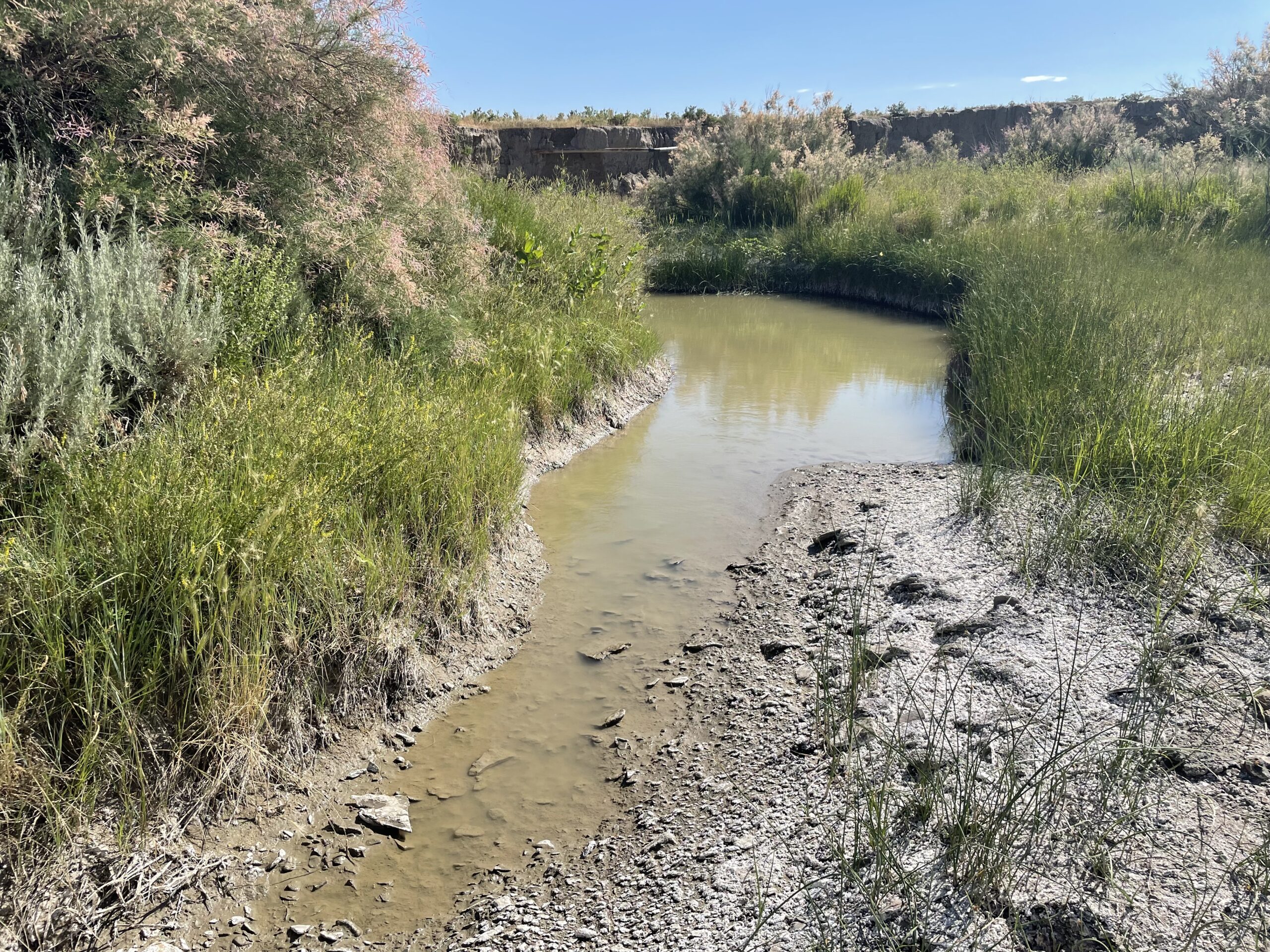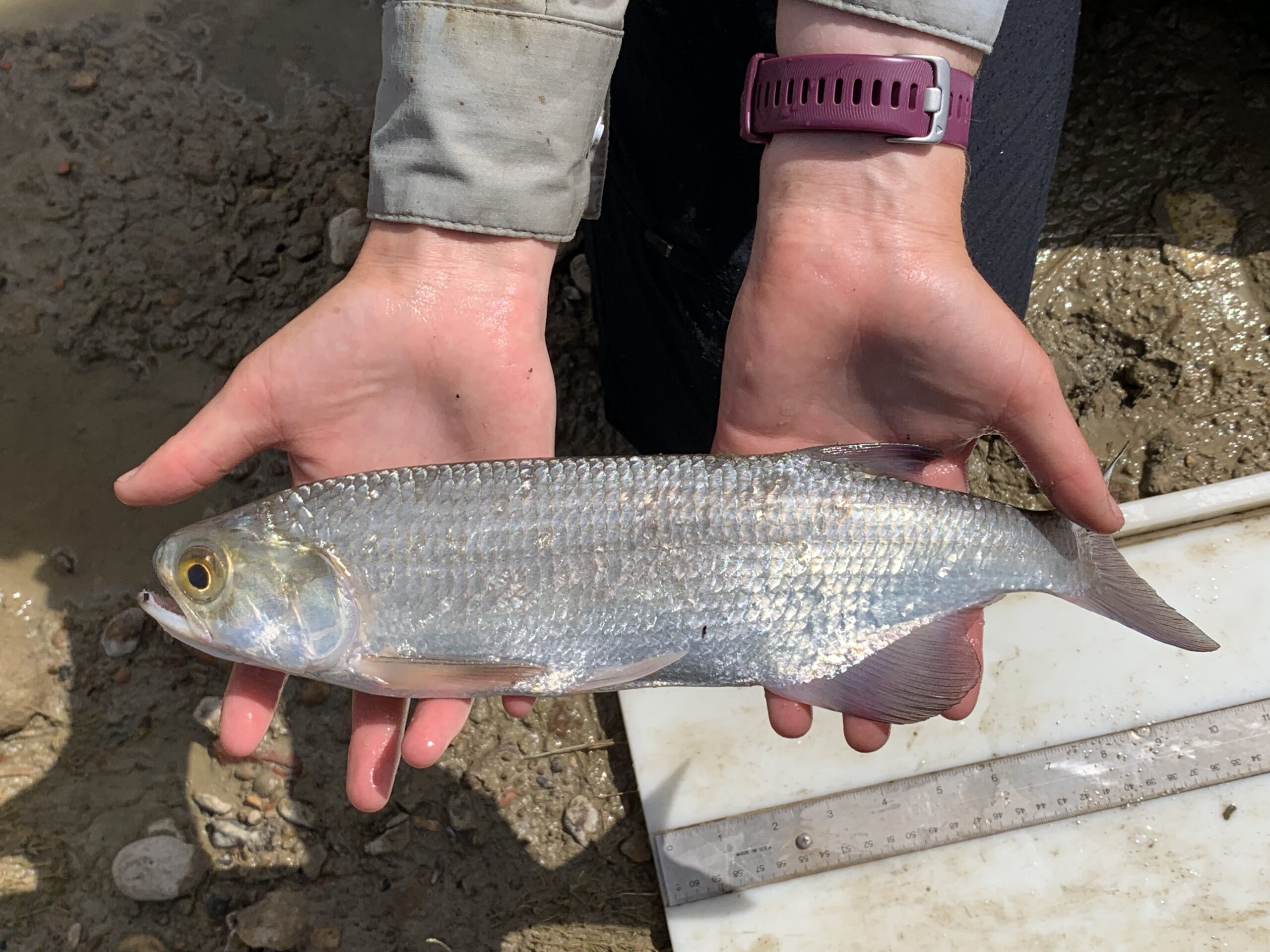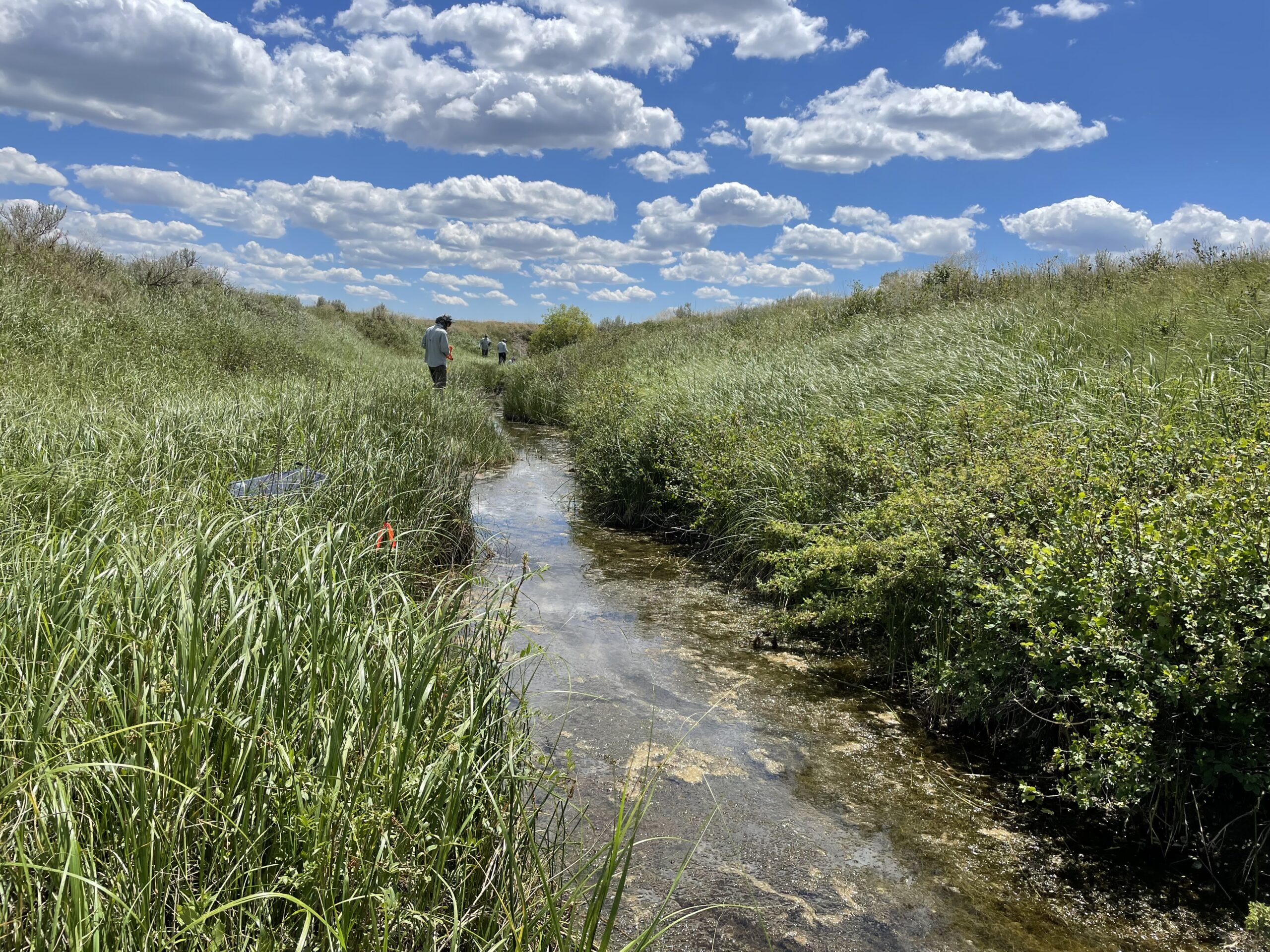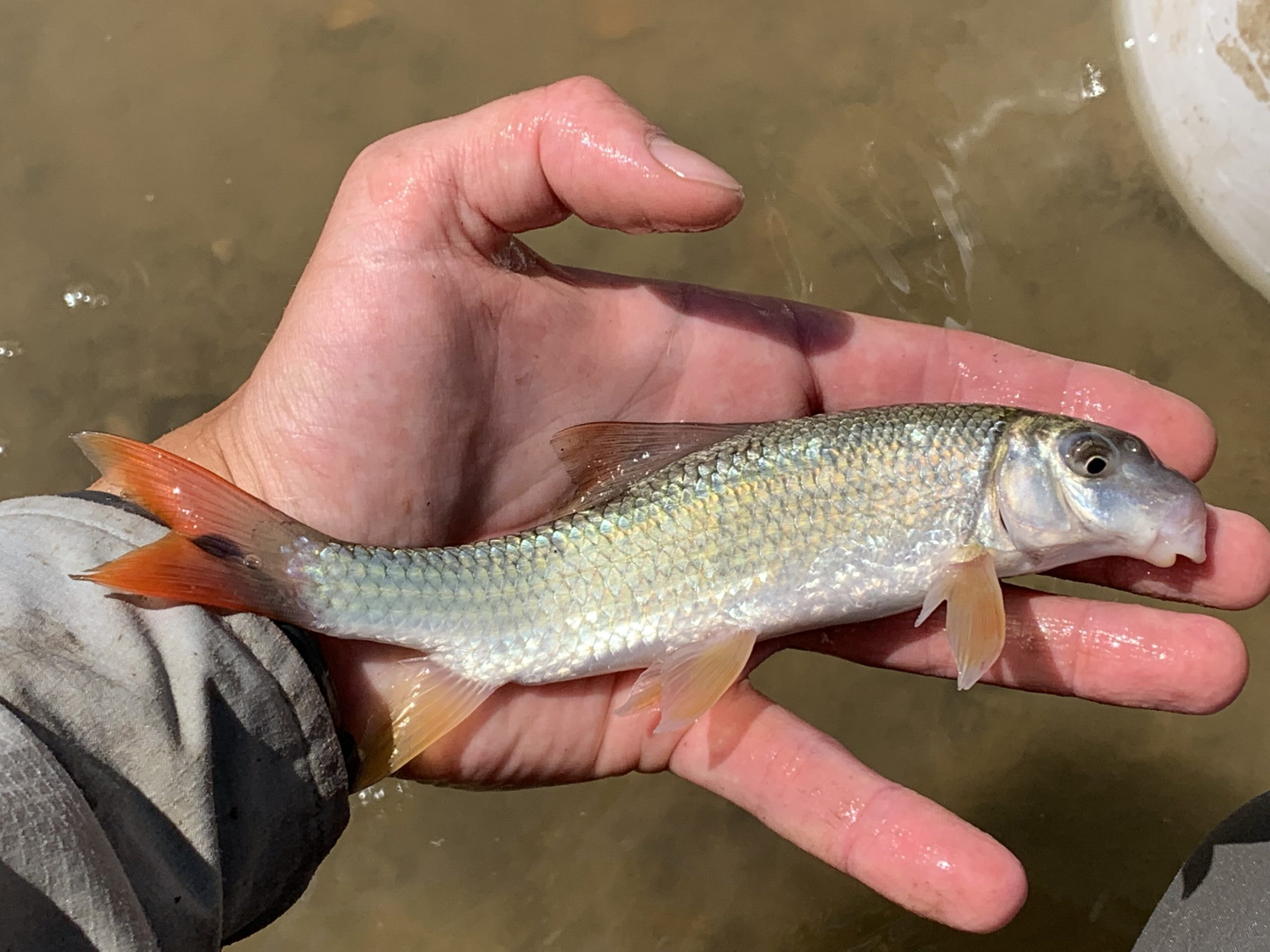Periodic drying of prairie streams is an integral process, and many species present in these areas have adapted to intermittent conditions. In intermittent streams, areas that are resistant to drying may serve as refuge for fish to recolonize once connectivity of the stream is restored. However, as drought increases with a changing climate, the area of habitat that once served as refuge may be constricting, potentially leaving fewer areas that can offer retreat during dry periods.
As a result, it is becoming increasingly important to understand the patterns of drying on a landscape scale. Doing so would give information on suitable habitat that may persist year-round despite increasing drought. It is also essential to understand how different rangeland stream fish species are impacted by drying, and if any are particularly sensitive to increased intermittency.
This study seeks to understand the relationship between streamflow permanence, fish distribution, and habitat characteristics in prairie systems of Wyoming. The aim of this work is twofold: to understand the sensitivity of different prairie fish species and guilds to stream permanence and to delineate and validate areas of drought refuge on the landscape. These components can then be linked to understand where different species can persist on the landscape under current and increasing levels of stream intermittency.
Contact
Elizabeth Rieger, masters student
Wyoming Cooperative Fish and Wildlife Research Unit
Department of Zoology & Physiology, University of Wyoming
Dept. 3166, 1000 E University Ave
Laramie, WY 82071
Annika Walters, Assistant Unit Leader
U.S. Geological Survey,
Wyoming Cooperative Fish and Wildlife Research Unit
Department of Zoology & Physiology, University of Wyoming
Dept. 3166, 1000 E University Ave
Laramie, WY 82071


